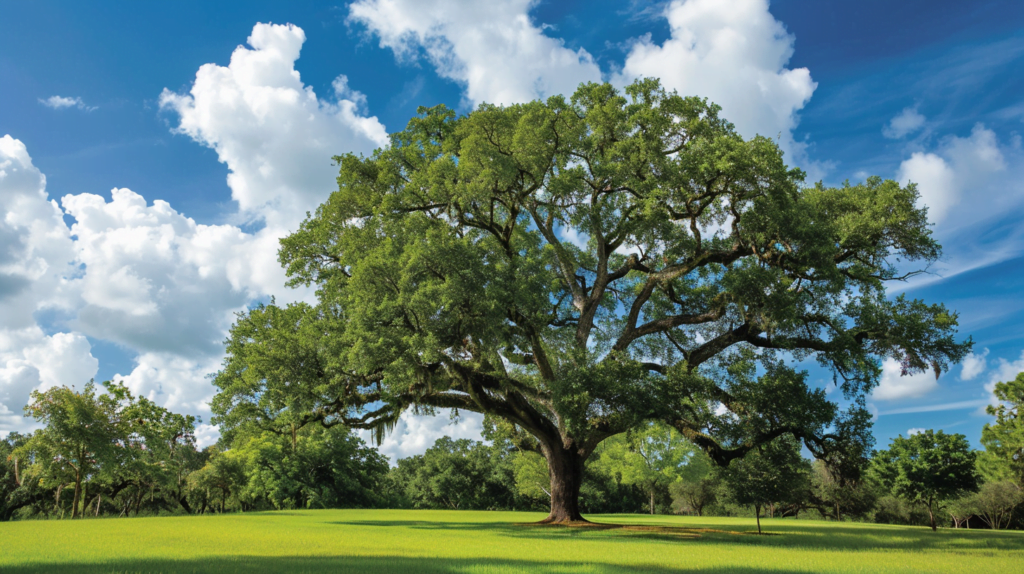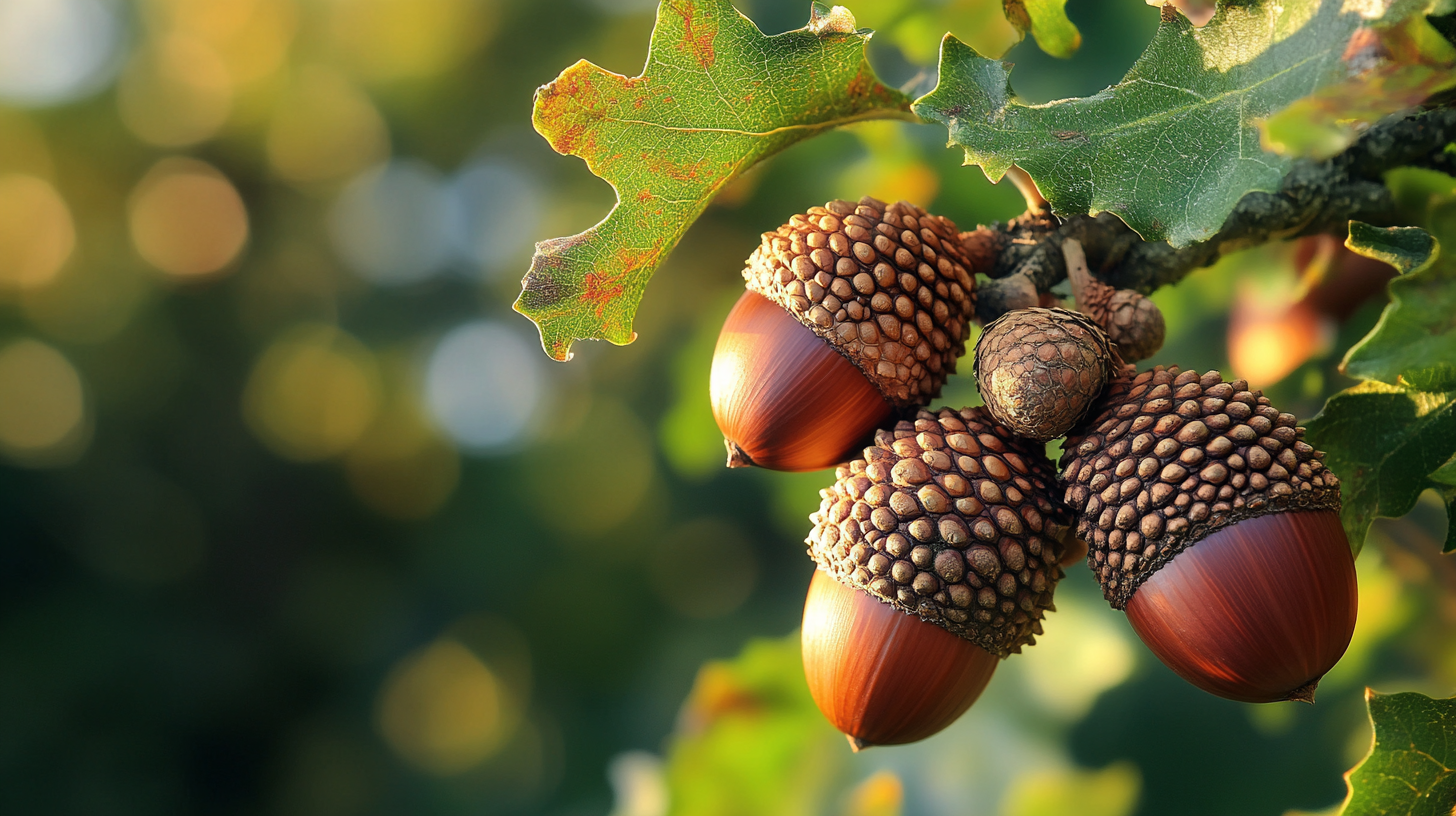Table of Contents
Oak trees are an integral part of Florida’s landscape, providing shade, supporting local wildlife, and adding beauty to the state’s parks and backyards. But have you ever wondered, are oak trees native to Florida? The answer is not a simple yes or no. While oak trees have been present in Florida for thousands of years, not all species are native to the state. In this article, we’ll delve into the history, benefits, and challenges of oak trees in Florida, as well as explore which species are truly native.
A Brief History of Oak Trees in Florida
Oak trees have been a part of Florida’s ecosystem for thousands of years. Fossil records show that oak trees were present in Florida during the last ice age, around 10,000 years ago. The trees played a crucial role in the lives of Native Americans, who used them for food, shelter, and medicine. The acorns from oak trees were a staple food source for many Native American tribes, and the wood was used for building canoes and tools. Early settlers also utilized oak trees, harvesting the wood for building and fuel.
The Importance of Oak Trees in Florida’s Ecosystem
Oak trees are a keystone species in Florida’s ecosystem, providing habitat and food for a variety of wildlife. They are a crucial part of the food chain, supporting birds, squirrels, deer, and many other species. Oak trees also play a key role in maintaining soil quality, preventing erosion, and supporting biodiversity.
Benefits of Oak Trees in Florida
Oak trees have numerous benefits for both the environment and the economy. They provide shade, reducing the need for air conditioning and improving air quality. They also support local wildlife, providing habitat and food for a variety of species. In addition, oak trees are a valuable resource for the timber industry, with many species of oak being highly prized for their wood.
Economic Benefits of Oak Trees
The economic benefits of oak trees in Florida are significant. The timber industry is a major contributor to the state’s economy, with oak wood being highly valued for its strength and durability. Oak trees also support tourism, with many visitors coming to Florida to enjoy the state’s natural beauty, including its oak trees.
Challenges Facing Oak Trees in Florida
Despite their importance, oak trees in Florida face several challenges. Climate change is altering the state’s weather patterns, making it more difficult for oak trees to thrive. Urbanization is also a major threat, as oak trees are often cleared to make way for development. In addition, oak trees are susceptible to disease, such as oak wilt, which can be devastating to local populations.
The Impact of Invasive Species
Invasive species, such as the laurel wilt fungus, are also a major threat to oak trees in Florida. This fungus, which is spread by the redbay ambrosia beetle, has already killed thousands of oak trees in the state. The fungus attacks the tree’s vascular system, preventing it from transporting water and nutrients.
Which Oak Tree Species Are Native to Florida?
Florida is home to several native oak tree species, each with its own unique characteristics and growth patterns. The four native oak tree species in Florida are:
Laurel Oak (Quercus laurifolia)
- Growth Pattern: Laurel oak is a fast-growing tree, reaching heights of up to 60 feet.
- Habitat: Found in wetlands and along streams.
- Characteristics: Has a broad, rounded crown and dark green leaves.
Water Oak (Quercus nigra)
- Growth Pattern: Water oak is a medium-growing tree, reaching heights of up to 50 feet.
- Habitat: Found in floodplains and along rivers.
- Characteristics: Has a broad, spreading crown and dark green leaves.
Willow Oak (Quercus phellos)
- Growth Pattern: Willow oak is a fast-growing tree, reaching heights of up to 50 feet.
- Habitat: Found in wetlands and along streams.
- Characteristics: Has a slender, columnar shape and light green leaves.
Live Oak (Quercus virginiana)
- Growth Pattern: Live oak is a slow-growing tree, reaching heights of up to 40 feet.
- Habitat: Found in a variety of habitats, including forests, prairies, and coastal areas.
- Characteristics: Has a broad, spreading crown and dark green leaves.
Non-Native Oak Tree Species in Florida
While Florida is home to several native oak tree species, it is also home to several non-native species. These species, such as the English oak (Quercus robur) and the Chinese cork oak (Quercus variabilis), can outcompete native species for resources and habitat. Non-native species can also introduce new diseases and pests, further threatening native oak tree populations.
The Risks of Non-Native Species
The introduction of non-native oak tree species can have devastating consequences for Florida’s ecosystem. These species can outcompete native species for resources, leading to a decline in native populations. They can also introduce new diseases and pests, further threatening native oak tree populations.

Caring for Oak Trees in Florida
Whether you’re a homeowner or a landscaper, caring for oak trees in Florida requires attention to their unique needs. Here are some tips for planting, maintaining, and protecting oak trees in Florida:
Planting Oak Trees
- Choose the Right Species: Select a species that is well-suited to your specific climate and soil type.
- Plant in the Right Location: Avoid planting oak trees in low-lying areas or where water tends to collect.
- Water Regularly: Water your oak tree regularly, especially during its first year of growth.
Maintaining Oak Trees
- Prune Regularly: Prune your oak tree regularly to maintain its shape and promote healthy growth.
- Fertilize: Fertilize your oak tree annually, using a balanced fertilizer.
- Monitor for Pests and Diseases: Regularly monitor your oak tree for signs of pests or diseases, and take action promptly if you notice any problems.
Protecting Oak Trees
- Avoid Over-Pruning: Avoid over-pruning your oak tree, as this can stress the tree and make it more susceptible to disease.
- Protect from Invasive Species: Take steps to protect your oak tree from invasive species, such as the redbay ambrosia beetle.
- Support Conservation Efforts: Support conservation efforts, such as the Florida Oak Tree Conservation Program, to help protect native oak tree populations.
Conclusion
Oak trees are an integral part of Florida’s ecosystem, providing habitat and food for a variety of wildlife, as well as supporting the state’s economy. While not all oak tree species are native to Florida, the state is home to several native species that are worth preserving and protecting. By understanding the history, benefits, and challenges of oak trees in Florida, we can better appreciate these magnificent trees and take steps to ensure their continued health and survival.
Are oak trees native to Florida? The answer is a resounding yes, but with a caveat. While oak trees have been present in Florida for thousands of years, not all species are native to the state. By understanding the differences between native and non-native species, we can better appreciate the importance of preserving and protecting Florida’s native oak tree populations.




